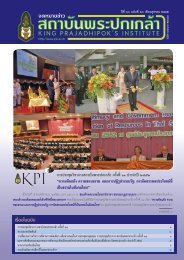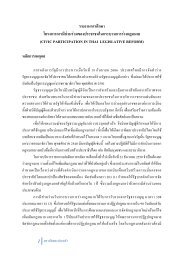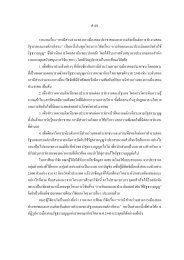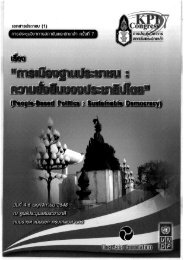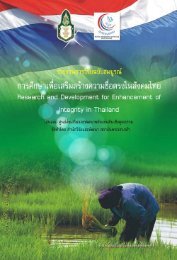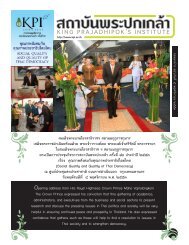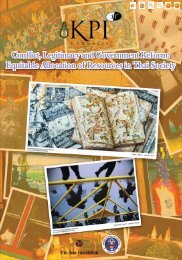SUFFiciENcy EcONOMy ANd GRASSROOtS DEvElOPMENt
SUFFiciENcy EcONOMy ANd GRASSROOtS DEvElOPMENt
SUFFiciENcy EcONOMy ANd GRASSROOtS DEvElOPMENt
You also want an ePaper? Increase the reach of your titles
YUMPU automatically turns print PDFs into web optimized ePapers that Google loves.
294<br />
3. Expansion in<br />
employment<br />
4. No Change in<br />
employment position<br />
The Meaning of Sufficiency Economy <br />
International Conference<br />
33 20 57<br />
40 46 114<br />
Total 100 95 206<br />
Source: Field data<br />
Note: Figures given in parenthesis indicate percentage.<br />
100<br />
(27.42)<br />
200<br />
(49.88)<br />
401<br />
(100.00)<br />
120<br />
100<br />
80<br />
60<br />
40<br />
20<br />
0<br />
Unemployment to self –<br />
employment<br />
Wage employment to self –<br />
employment<br />
Expansion in employment<br />
No Change in employment<br />
position<br />
SHGs – NGOs H.D.Kote SHGs – NGOs of K.R.Nagar SHGs – NGOs Mysore<br />
Change in Household Employment and Income: An integrated approach of<br />
Change in Household Employment and Income: An integrated approach of<br />
microfinance could be be to to engage in hybrid programmes – microfinance-plusapproach,<br />
where the microfinance intermediary itself itself or or a a collaborating organism<br />
offers financial services in combination with other complementary services, such as<br />
offers financial services in combination with other complementary services, such as<br />
training in enterprise management, education in health and nutrition. This approach<br />
training would allow in enterprise the vulnerable management, poor microfinance education in health clientele and to nutrition. expand This their approach economic<br />
would<br />
basis or<br />
allow<br />
income).<br />
the vulnerable poor microfinance clientele to expand their economic<br />
basis or income). <br />
Change in Household Assets <br />
The studies showed that the participation in microfinance programme led to<br />
18<br />
improvement in financial assets, enterprise assets, household physical assets, human<br />
assets, social assets, etc. The introduction of compulsory or voluntary savings in<br />
microfinance leads to higher rates of savings (Barnes, 2001). The cross county study<br />
on impact of microfinance on acquisition of durable assets found that extremely<br />
poor households acquired household accessories like, stove, refrigerator, electronics<br />
appliances, modes of transport, etc. (ibid). In India, Chen and Snodgrass (2001)<br />
find a positive impact on spending for home improvement among all<br />
borrowers. Borrowers with multiple sequential loans spend significantly more<br />
on housing improvements, appliances and transport equipment’s than the nonmembers<br />
of microfinance programme (Barnes, 2001).<br />
The microfinance programme has created and nurtured the habit of thrift and<br />
savings in the members. There were only 6.3 and 1.9 per cent of the microfinance<br />
members in H.D.Kote and K.R.Nagar who were saving prior to joining the<br />
microfinance. However, in the post microfinance all the members are having<br />
compulsory savings accounts. The mean savings were Rs. 1593 and Rs.1110 per



